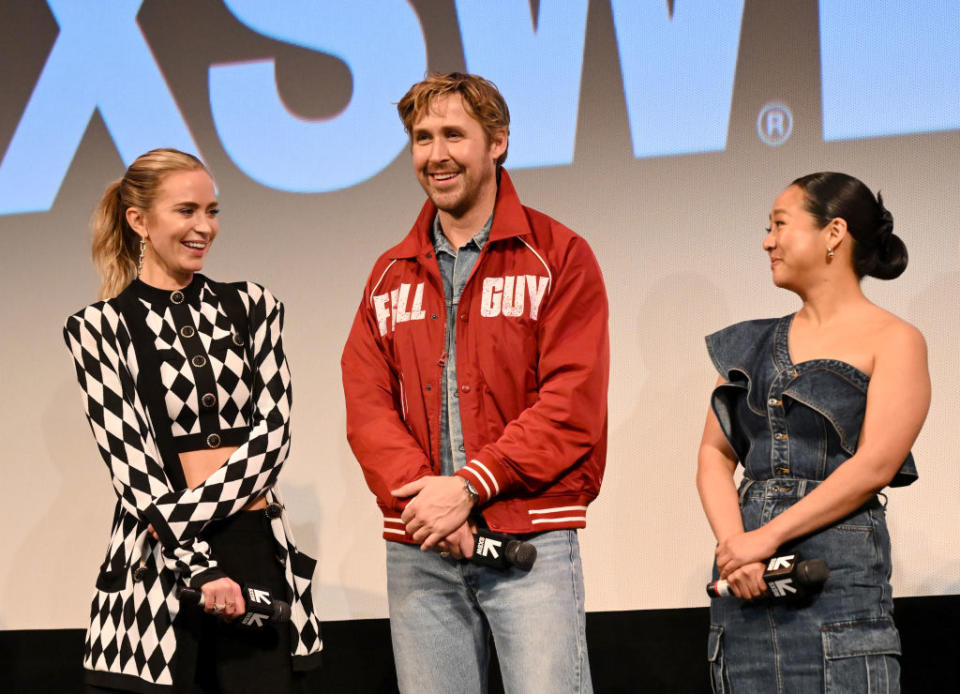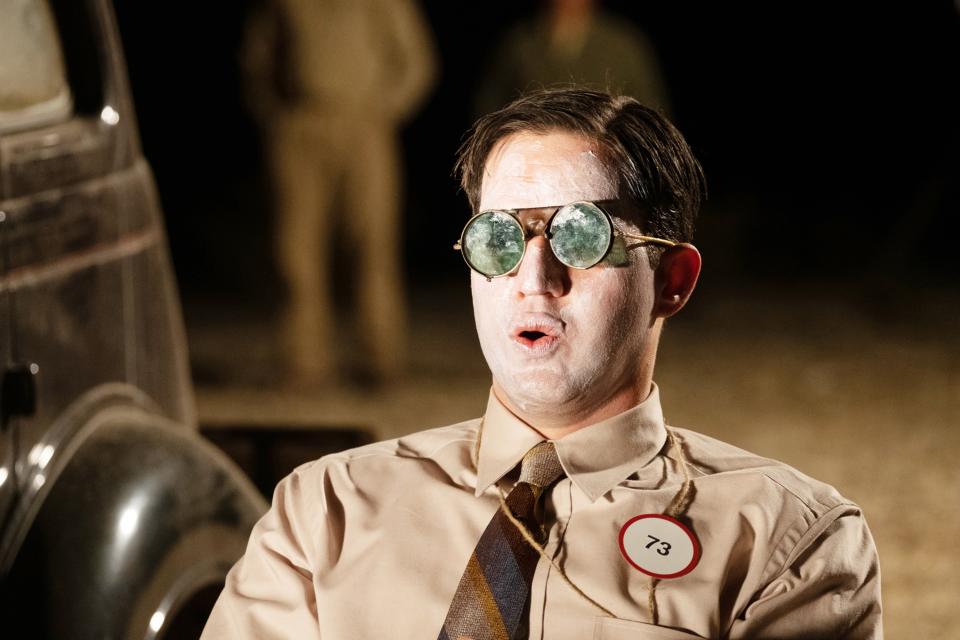A Tale of Two SXSWs: An AI Divide So Wide You Could Drive a Film Industry Through It

The hotel employee checking me in was visibly excited. Leaning in to tell me something confidential, I half expected to hear Ryan Gosling was staying there.
“There’s an AI robot staying at the hotel,” she said. “It was just down here at the bar.”
More from IndieWire
“Does it have its own room?”
“I’m not sure if its–,” the woman paused. “Do you say owner? Handler? Friend?”
I hadn’t a clue, and still don’t. While breakthroughs in pre-trained large-language models are driving this artificial intelligence moment, one thing on display in Austin this week was the lack of words we possess to properly discuss it.
But discuss it we did at the SXSW Conferences, where AI was the topic dominating hundreds of panels, workshops, talks, and meet-up-sessions spread over 24 different tracks. The overwhelming message coming out the film track was AI is a tool — a powerful one, poised to upend the entertainment industry, but with the potential (if properly implemented) to enhance human creativity.
It’s a very SXSW message, where innovators talk about burgeoning tech like Yoda talks about the force: Extremely powerful, but if you learn to wield it, you can use it for good.
Meanwhile, the community at the SXSW Film Festival had a healthy skepticism of the conference’s tech innovation-speak. As one colleague, and a long time SXSW attendee, said: “Every year they tell us this new thing will change everything and ‘democratize filmmaking.’”
Most recently it was blockchain; before that, VR. Over multiple years, the conference preached how streaming would flatten the playing field … which it did, although that action verb turned out to be painfully acute. The 2023 WGA strike laid bare how, in the name of streaming’s potential, movie studios did lasting harm to the film and TV industries.
These clashing views held a real-world demonstration at the March 12 premiere of “The Fall Guy.” Preceding the show was a SXSW Conference AI recap, but the video’s voiceover became inaudible as the sold-out Paramount Theater audience laid bare its disdain with boos and catcalls.
In the audience were Daniel Kwan and Daniel Scheinert. Earlier that day, the Oscar-winning filmmakers presented a SXSW keynote, “How We Pulled Off ‘Everything Everywhere All at Once,'” which also gave voice to the filmmaking community’s fear of AI in the wake of the Sora demo just three weeks prior.
“It’s magic, it’s going to solve cancer and bring solutions, it’s a powerful thing, but I’m really terrified of this new story,” said Kwan of AI. “If someone says there’s no side effects and it’s great, that’s terrifying bullshit. We have to think about how to carefully deploy this stuff.”
In many ways The Daniels, who premiered “Everywhere Everything All at Once” at SXSW 2022, represent the ethos of the DIY filmmaker. Their films feel handmade and bear their fingerprints, the antithesis of what AI represented to those in the Paramount.
Heightening the contrast was “The Fall Guy” premiere’s throwback vibes. Riding down 6th Street in the back of a pickup, fresh off his “I’m Just Ken” performance at the Oscars, everything about Gosling’s brilliantly staged arrival said that movie stardom could never be upstaged by an AI robot.

Fresh off the “Oppenheimer” Oscar triumph, Universal chairman Donna Langley and her team were also in Austin to unveil what will likely be another box-office success for the theatrical-first studio. Director David Leitch’s film is an ode to practical stunts and a throwback to big action and romance. SXSW head film programmer Claudette Godfrey called “The Fall Guy” the type of old-school film “that makes you remember why you first fell in love with movies.”
That premiere encapsulated something about this cinephile moment, the power of movie stars over franchises, the re-embrace of celluloid and cinema-going, the belief CGI is bad (yay, practical stunts), which leads to the natural conviction that implementation of AI will only be worse. As someone who learned filmmaking while watching 16mm prints of 1930-’60s studio films in a basement screening room, I couldn’t help but smile when the elated Paramount crowd exited the premiere, and someone shouted, “AI will never make that!”
That something has been lost in the craft of Hollywood filmmaking over the last 10-20 years is undeniable. The principals in the fight against the Marvel-ization of Hollywood are rooted in two ideas: the primacy of the filmmaker and that world building happens in the conception of the frame. A director’s vision when nurtured with studio dollars, time, and talent produces cinematic thrills that far exceed the recent blockbuster-dominated output. Now, in the midst of Marvel fatigue and the triumph of “Barbie,” “Oppenheimer,” “Dune: Part Two,” and soon, “The Fall Guy,” there are small gusts of wind in those sails.
And while my heart is with those in the Paramount Tuesday night, there is something unsettling in knee-jerk reactions rooted in a belief system that doesn’t always reflect how the modern movies we love are actually made.

Four hours before “The Fall Guy” premiere, I took part in an AI-workshop hosted by Framestore, the visual effects company that works on many, many major films, including [shhhhhhh!] “Oppenheimer,” “Barbie,” and “The Fall Guy.” Like so many filmmakers in virtual production, animation, and visual effects, they were not only giddy about the advancements AI might bring to their craft, but they also are employing them. AI be damned, Framestore is comprised of old-school artisans — but our anti-CGI POV denies our understanding of that.
Over the last three decades, VFX artists have been forced to reinvent their workflow multiple times to incorporate new innovations, making them far more open to the potential of AI. The most recent seismic evolution was the introduction of real-time game engines that further break down the wall between visual effects and the other filmmaking crafts, a trend that will only accelerate in the coming years.
However, that’s not a popular topic for discussion. In rejecting the way Hollywood started to make movies, we developed a belief systems that new techniques and tools were to blame, rather than focusing on how they were employed. When every action director we have on the Toolkit podcast pretends its all practical and not CGI, and Christopher Nolan would rather you believe he let off a real bomb than utilize VFX, we have reached a point of dangerous orthodoxy. An anti-CGI religion has formed, that has given studios permission to regularly delay, embargo, or forbid interviews with VFX teams because it would somehow lessen our appreciation of the incredible work of “Barbie” production designer Sarah Greenwood, or worse, our embrace of Greta Gerwig’s vision and its pre-digital roots in “Singin’ in the Rain” and “Wizard of Oz.”
I would like to call bullshit. Beyond fairness, and recognizing hundreds of people who work on our favorite films and TV shows, we have to recognize that a deathgrip on tradition creates the worst kind of self-own. This isn’t about drinking the SXSW Conference Kool Aid that promised we’d all be wearing VR headsets by 2021; it’s engaging with how the rapid advancement and implementation of new technology has already taken place, as AI tools are poised to be used to conceive projects at every budget level and stage of the filmmaking process.
The biggest problem may be our language and the lack thereof, leaving us nowhere near ready for the harder conversations around generative AI. To be clear, no filmmaker who uses AI believes that a well-written prompt will allow Hollywood to make a musical in the style of the The Daniels. (Most don’t even see a path for generative AI video to end up in their finished product.) Filmmakers who insist on that dystopian perspective risk becoming the Flat Earthers of Hollywood. By having already wrapped our belief system into a tool being good or bad, rather than turning our critical (and highly skeptical) eyes toward how it is employed, our path to irrelevance will continue to move as fast as technology.
Take out your phone. (Per Google Analytics, 75 percent of you are holding one while reading this article). Look at some recent photos and videos, then compare to ones you took six years ago. The lenses and resolution have dramatically improved, but did you really become technically better at taking photos? For most of us, the answer is no.
Your phone is already an AI-powered camera. (Presto: We’re all early AI adopters.) Its hardware contains a neural engine that uses machine learning to analyze countless images and make adjustments to the scene in front of you, but does that make the photos any less authentic? Newer iPhones have the ability to acquire depth data and, with free AI software, your simple videos can become motion-capture animation like an amateur James Cameron.
There’s plenty to be skeptical about with AI, along with good reason to mistrust how Hollywood and corporations will use it to create “content,” but that’s also why we must educate ourselves rather than keep our collective heads in the sand. If we don’t understand how technology is being adapted as a filmmaking tool, we leave ourselves helpless to shape the conversation around what we collectively hold dear: the creation of motion pictures through eyes and heart of imperfect human beings.
And go see “The Fall Guy” on May 3. It’s great. Look forward to Bill Desowitz’s coverage of the CGI work that allowed the stuntmen’s incredible work to shine — once Universal lifts the interview embargoes in the fall.
Best of IndieWire
The 45 Best Romance Movies of the 21st Century, from 'High Fidelity' to 'Carol'
The Best Thrillers Streaming on Netflix in March, from 'Fair Play' to 'Emily the Criminal'
Sign up for Indiewire's Newsletter. For the latest news, follow us on Facebook, Twitter, and Instagram.

 Yahoo News
Yahoo News 
